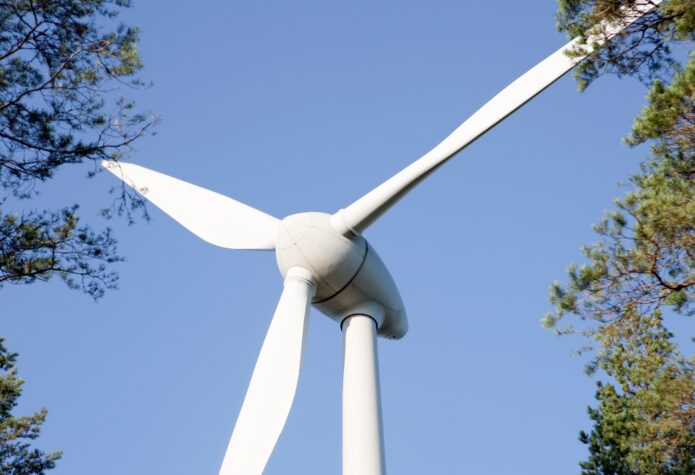Polish wind energy: from leap to stall?

Poland, a country with a long history of highly polluting coal-based power generation, is eyeing wind as one of the most promising alternatives to coal for its national energy mix. Although the country showed the second fastest growth in the EU in adding new wind capacity in 2015, this sector is facing investment pullback.
Even though coal mining in Poland contracted significantly in the 1990s and the country has cut its carbon emissions by one third since then, Poland remains Europe’s largest coal producer. Coal- and lignite-fired power plants account for about 80% of the country’s energy supply and employ over a hundred thousand people.
According to a report from the European Environmental Agency on air quality in Europe, air pollution in Poland caused by microscopic particles—PM2.5: particulate matter with a diameter of 2.5 μm or less—resulted in almost 45,000 premature deaths in 2012 alone. The main sources of PM2.5 emissions are coal and biomass combustion. These emissions have risen in the past decade.
To curb its dependence on fossil fuels, Poland has pledged to produce 15% of its energy consumption through renewable energy sources by 2020, up from the current 12%. The International Renewable Energy Agency believes that, “among the non-biomass renewables options, wind power has the largest potential in Poland”.
NIB financing Energa investments
Energa S.A. is one of the country’s major electricity distributors with the highest share of the renewable energy in the production of electricity, which accounts for 41% of the company’s output.
In recent years, Energa has launched five wind farms with an aggregated capacity of 211 MW. One of them, the 20 MW Myslino wind turbine park in the northwest of the country, has been financed with a EUR 16 million loan from NIB.
“The Bank is contributing to the development of renewable energy sources in many parts of the Baltic Sea region. Poland is part of this region, and we are drawing on the experience of long-standing cooperation with Energa, which operates in central and northern part of Poland”, says Thomas Wrangdahl, First Vice-President and Head of Lending at NIB.
Prior to the loan for the wind park, in 2010, NIB had financed the construction of an electricity distribution network and substations necessary to connect renewable energy sources (primarily wind farms) to the national electricity grid.
Leap ahead of stall?
Still in its infancy, the generation capacity of wind power in Poland has expanded tenfold over the past decade, and had reached 5.1 GW by the end of 2015. That year, the size of the newly installed wind capacity in Poland, 1.27 GW, was the second largest in the EU (after Germany).
There have been comments in the industry that the leap of 2015 happened in anticipation of the imminent changes in legislation and switching to a new auction scheme.
New legislation passed in 2016 imposes rules on how close wind turbines can be to residential areas and protected natural sites. According to the Polish Association of Wind Energy, the effect of these rules would make 99% of Polish land unsuitable for wind farms.
Another important challenge is the transmission grid in Poland. Ms Karaś says that this is a key limiting factor for the renewable projects.
She also points out that the new Renewable Energy Act introduces an auction mechanism to procure renewable energy.
“The competition with other renewable energy projects, for instance with biomass, would limit further expansion of wind projects”, says Ms Karaś. For example, the recently published proposal for the renewable energy auctions in 2017 supports mainly biogas and biomass technologies.
“The new regulations are effectively blocking new wind energy investments in Poland. Even if the government allows a significant number of wind farms to access the auction system for renewables in 2018, the odds are that investors will not be able to meet the deadlines for the necessary operating permits”, says Ms Karaś.
Pulling back investments
After impairment losses of PLN247 million (EUR 55 million) in the generation segment for wind farms in Q2 2016, Energa decided to suspend several wind projects.
Still, Energa is set to invest in 50 MWe of installed capacity in renewable energy projects by 2020.
The company has one wind farm project of 30 MWe and a 10 MWe biomass CHP project ready to take part in renewable energy auctions.
Despite the numerous challenges, Poland would greatly benefit from more diverse power generation.

“Besides the obvious environmental benefits, diversification would improve the security of the power supply. There are a number of promising projects in the pipeline, such as the Baltic Ring and European super grid. Both would boost energy security in the region interest and improve power balancing.”
Agnieszka Karaś
Senior Consultant at Environmental Resources Management (ERM)
ERM provides environmental, health, safety, risk, social consulting services and sustainability related services in over 40 countries around the world.
Read more:
Renewable energy prospects for Poland (IRENA)
Energy policies of IEA countries – Poland (IEA)

